Anushilan Samiti and Jugantar : Forgotten Liberators
- In History & Culture
- 03:26 AM, May 14, 2016
- Shwetank Bhushan
Starting from the Battle of Palassi of June 1757, up to the strike of 700,000 workers in Calcutta in solidarity with the revolt of Indian Navy in February 1946, Bengal was one of the main theaters of India’s struggle for freedom against British Imperialism.
The revolutionary activities in Bengal got an impetus from the Swadeshi movement that stirred the political and national consciousness of Bengal to an extent unknown before. The boycott of English goods failed to achieve the desired object which soon outgrew the original aim of undoing the Partition of Bengal and envisaged the political freedom of India. Hence, an increasing number of young men turned to revolutionary activities as the only possible means to attain their ends.
It was the first decade of 20th Century that witnessed the foundation of two revolutionary organizations: Anushilan Samiti and Jugantar. The history of India’s struggle for freedom cannot be properly recorded without mentioning the sacrifices of the martyrs, be it on the gallows and/or on the streets or inside the torture chambers.
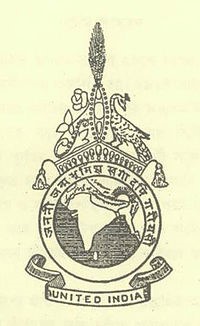
Anushilan Samity Logo
Motto: United Free India.
Concept: "जननी जन्मभूमिश्च स्वर्गादपि गरीयसी" ... translated as "Mother and motherland are superior to Heaven."
Conceptualization and formation:
Anushilan Samiti means "Self-Culture Association". Inspired by thoughts, speeches and writings of Swami Vivekananda and influenced by Bankim Chandra Chatterjee’s ‘Anandmath’, the concept was formulated with its roots in Sashakta Hinduism. Their main aim was to create urge amongst the Hindus to become vigorous spiritually, physically and intellectually. As a result, unnumbered youth clubs denominated as Anushilan Samiti were formed.
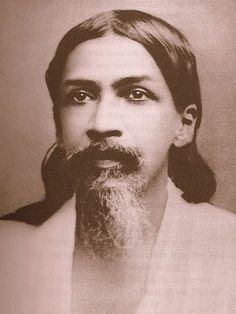
Sri Aurobindo Ghose
In the initial phase, Anushilan Samiti was established on 24 March 1902, in Kolkata under the headship of Barindra Kumar Ghosh, younger brother of Sri Aurobindo Ghosh. Pramatha Nath Mitra, Sri Aurobindo, and Deshabandhu Chittaranjan Das were made the vice-presidents of the Samiti. Noted revolutionary Suren Tagore (Rabindranath Tagore's nephew) became the treasurer. Jatindra Nath Mukherjee (Bagha Jatin), Bhupendra Nath Datta (Swami Vivekananda's brother), were the other legendary nationalist leaders. It was bent on overthrowing the British colonial rule.
Operations of the Samitis were controlled under the pretense of a suburban fitness club. Members of the organization used to believe that the constitution of small 'non-violent' youth clubs committed to the three-fold aims of physical, mental, and spiritual development of the youth could lead them towards attaining independence. These kinds of organizations were formed much before the organization changed into a revolutionary outfit bit by bit.
Spread:
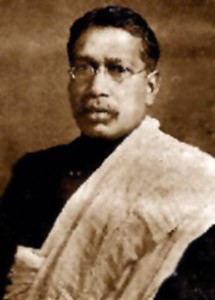
Sri Bipin Chandra Pal
In 1905, they published a book Bhavani Mandir (Temple of Goddess Bhavani) giving the detailed plan of establishing a religious sanctuary, in a secluded spot, as the center of revolutionary activities. Two years later, they published another book Vartaman Rananiti (Rules of Modern Warfare), which made an eloquent plea for military training and laid down details of war, particularly guerilla warfare.
In March 1906, Aurobindo Ghosh and Bipin Chandra Pal began a Bengali nationalist weekly, Jugantar (New Era) and its English counterpart Bande Mataram, which openly preached arm rebellion in order to create the necessary revolutionary mentality among the people. It was started in 1906, had a circulation of more than 7000. Another publication, Mukti Kon Pathe (Which way lies Salvation?), exhorts its readers to win over the Indian soldiers to the revolutionary societies and secure arms from foreign powers.
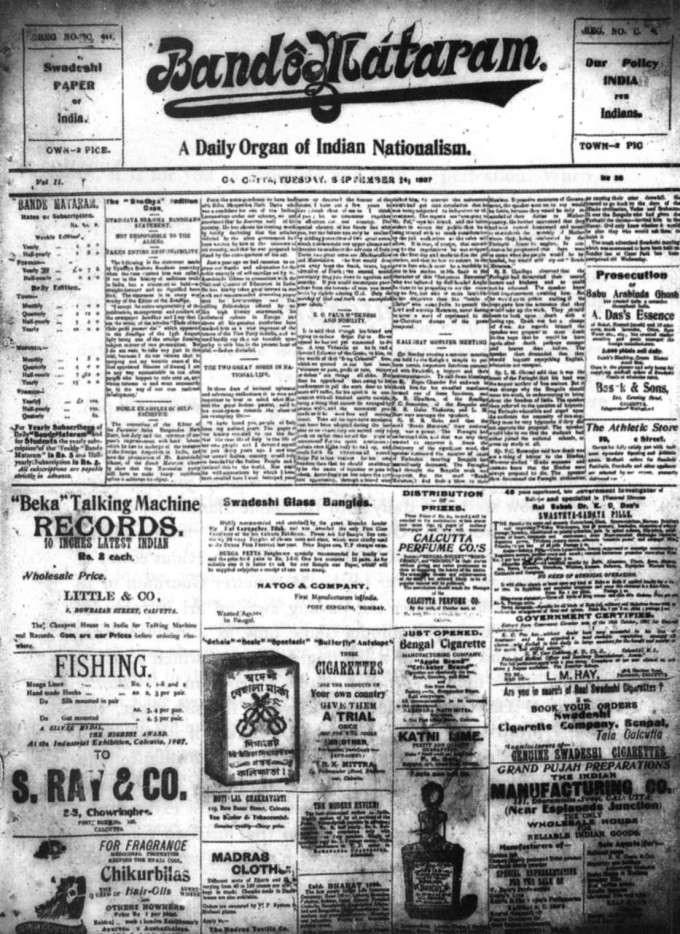
'Bande Mataram' - A Daily Organ of Indian Nationalism
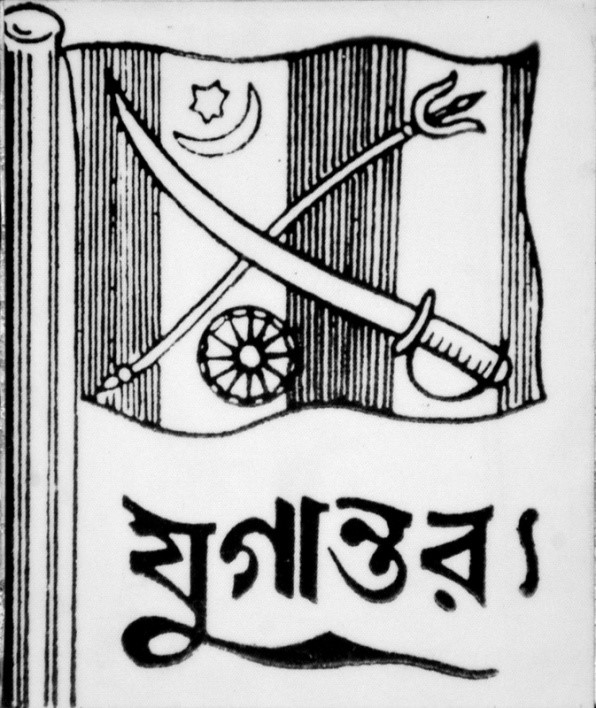
Emblem of 'Yugantar' (or 'Jugantar') - Revolutionary Bengali Newspaper
Branches of the Samiti were set up all over Bengal. It stimulated radical nationalist sentiments in the Bhadralok community in Bengal and helped Anushilan acquire a support base amongst the educated, politically conscious and disaffected youth of Bengal.
Bipin Chandra Pal gave a speech against the Partition of Bengal in Dhaka in 1905, which had managed to spread tempestuousness among the Hindu gentry of East Bengal. Afterward, under the leadership of Pulin Bihari Das, 80 other young men constituted an Anushilan Samiti in Dhaka in September 1906. Dhaka was the Headquarter of this Samiti. Calcutta had three societies working under the umbrella of Anushilan Samiti, first under Pramatha Nath Mitra, another led by a Bengali lady Sarala Devi and a third one led by Aurobindo Ghosh - one of the strongest proponents of revolutionary nationalism of that time. The Calcutta and the Dhaka Anushilan Samiti were now united on the lines of the secret societies of Russia and Italy.
Appeal to Hindu spirituality and religion provided dynamic power to the Samitis. The profoundly Hindu character of its inspiration is evident in the reading list of its members, which was predominantly Hindu mythology. Among the books recommended for its members, the works of Swami Vivekananda were given the first place. The Gita was employed at the time of administering the vows when one was admitted to the fold of the Anushilan Samiti and this was a technical reason why perhaps Muslims were not very inclined.
The expansion of Samitis took place through formation of an assortment of akhadas (gymnasiums) in different parts of Calcutta and its outskirts. All these, innovations without a shred of doubt, stimulated Hindu youth to the greatest extent and documents assert that thousands of people used to gather to perceive related tournaments.
Armed Revolution:
It is not very certain at what time, however, the year 1905 is now recognized as the time when the Samiti started to take up full time armed revolution programs. The unpopular educational reforms of Lord Curzon and the Partition of Bengal thus are considered the chief reasons behind radical activities of Anushilan Samiti.
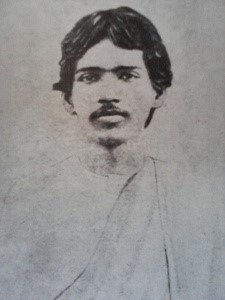
Barindra Ghose: Overman Foundation
The group led by Barindra Ghosh actually put these ideas into practice. Two members went abroad to be trained for the manufacture of explosives, and on their return, regular arrangements were made for preparing bombs in the Muraripukur Garden House in Maniktola, a suburb in Calcutta.
From 1907, the members belonging to Anushilan Samiti were very active in revolutionary activities. On 6 December 1907, they tried to blow up the train in which the Lieutenant-Governor of the new province of Eastern Bengal and Assam was traveling. A few days later, on 23 December, they attempted to assassinate Mr. Allen, formerly District Magistrate of Dhaka.

Jatindranath Mukherjee - The Tiger
Jatindranath Banerjee (Bagha Jatin) of Calcutta Samiti undertook military training in the army of Maharaja of Baroda along with Barindra Ghosh, where Aurobindo Ghosh was the chief secretary and close advisor of the Maharaja of Baroda, Sayajirao Gaekwar.
Soon, attempts were made to kill the Lt. Governors of East Bengal and Bengal but proved unsuccessful. Their next venture was to murder Mr. Kingsford, the Chief Presidency Magistrate, under whose orders some young men had been severely flogged for comparatively slight offenses. Two members of the party, Prafulla Chaki and Khudiram Bose, were sent to Muzaffarpur for the purpose. On 30th April 1908, they threw a bomb at a carriage, which resembled that of Kingsford, but in fact belonged to one Mr. Kennedy, with the result that the wife and daughter of the latter were killed. Prafulla was arrested but shot himself dead, and Khudiram was tried and hanged. Here, this author posted a detailed account of the Alipur Conspiracy trial
Two days later the Muraripukur Garden House was searched by the police, and bombs, dynamite, and cartridges were found. Thirty-four persons, including Aurobindo Ghosh, Barindra, and his principal associates were arrested and charged with conspiracy. While the trial was going on, the public prosecutor who conducted the case at Alipur, and a Deputy Superintendent of Police, who was attending the appeal of this conspiracy in the High Court, were both shot dead, in the court premises. Of the accused, fifteen were found guilty and some of them including Barindra were transported to Cellular Jail for life. Aurobindo Ghosh was acquitted after serving a prison sentence and then retired from active politics.
It was Narendra Gosain, a member of the Barindra Group, who had divulged the secret to the police and thus enabled them to trap their whole revolutionary band at the garden house. When he turned approver, his name was cursed by one and all. He was murdered inside the jail compound by Kanai Lal Datta and Satyen Bose, two revolutionary prisoners of the same group so that his confession could not be treated as evidence. The news of Gosain’s death was hailed with joy all over Bengal and his murderers were elevated to the rank of heroes and martyrs. After Kanai Lal Datta was hanged to death, his dead body was carried in a funeral procession which kings and conquering heroes would have envied.
It is clear from the brief account above that Barindra and his associates could not carry on the revolutionary activities beyond the preliminary stage. But when they were arrested, they had not only made the revolutionary ideal – the cult of the bombs - popular but also gave it an honored place in the struggle for freedom and created a great sensation all over the country. Very few in India could really believe before this that there could be an organized attempt to overthrow the British Govt. by means of bombs. The courage and the self-sacrificing spirit of the young men served a great inspiration to hundreds of Indian youths.
Their unfinished work was carried on by the Anushilan Samiti which was fully inspired by the ideals preached in the Yugantar and other publications.
The Alipur trial led to divisions in the Anushilan Samiti. Bagha Jatin escaped arrest in the Alipur case, and took over the leadership of the secret society, to be known as the Jugantar Party. He revitalized the links between the central organization in Calcutta and its several branches spread all over Bengal, Bihar, Orissa and several places in Uttar Pradesh and opened hideouts in the Sunder-ban for members who had gone underground. However, the government had identified the Samitis in two broad groups: Jugantar group and Dhaka Anushilan group. The revolutionary activities in Western Bengal practically came to a stop for a time from 1910 and since then the storm center of revolutionary activities shifted to Eastern Bengal.
Dhaka Anushilan Samiti:
The revolutionaries suffered grievous blows with the death or arrest of some of their important leaders. In effect, they had been divided into two groups with distinct convictions. The Dhaka Anushilan Samiti in Eastern Bengal did not participate in the Indo-German plan that the Jugantar Party in Western Bengal promoted. The Dhaka Anushilan Samiti’s relations with the Jugantar group had been slender until the First World War. The World War situation provided the Bengali revolutionaries with the opportunity to coalesce into a somewhat united movement. Jugantar again came into being as a federation of revolutionary cells all over the country.
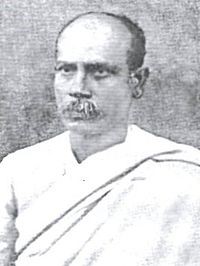
Pulin Bihari Das
Pulin Behari Das was in charge of the Dhaka Anushilan Samiti that maintained regular contact with the Kolkata Jugantar Group. It was the orchestrating ability of Pulin Bihari Das, which made Dhaka Anushilan Samiti hold a premier position. Dhaka Samiti soon overshadowed the parent organization. But the government maintained strict vigilance over the suspects. The arrest and deportation of Pulin Bihari created chaos among the Dhaka Samiti. which had to go underground temporarily. His successor, Makhanlal Sen, was attached to the social welfare and spiritual development taught by Vivekananda, disagreeing with gratuitous violence. Spending most of his time in Kolkata since 1910, in the company of the Jugantar people and visiting regularly the Ramakrishna Mission, Makhanlal Sen let Narendra Mohan Sen assume the leadership of the Dhaka Samiti. Soon, working by his side, Trilokinath and Parul Chandra took charge and the rebels were united again. Informed about the Indo-German plot, desirous to determine the part his party could play therein. But for unknown reasons, the Dhaka Samiti decided not to collaborate in this revolutionary program.
Daring Revolutionary Activities:
The most sensational among their activities were the murders and dacoities. So far as recorded evidence goes, no less than sixty-four persons were murdered between 1907 and 1917. These included Police officials, both high (Deputy Superintendent of Police, Inspectors) and low (sub-inspectors, constables, etc), one Public Prosecutor, several police informers, witnesses against revolutionaries in the Court trials, and fellow revolutionaries suspected of having betrayed the secrets of the party to Police. Many unsuccessful attempts were made to kill high officials including the Lt. Governor, Sir Andrew Fraser, and in some cases persistent attempts were made to kill the same person again and again until he was dead. There were many other secret societies following more or less the same method and program.
The most adventurous were the dacoity at Barha, where the revolutionaries escaped in boats with 25,000 Rupees, though pursued by the villagers on a Police launch. Another one was committed with the help of a taxi in Calcutta, in broad daylight, and 18,000 Rupees were taken from the Hackney carriage. A sum of Rupees 23,000 was robbed from a train. But it was a sworn principle that the body of a woman should never be touched. The official records give details of 112 dacoities involving nearly seven lakhs of Rupees during the years 1907-1917.
Among the means adopted to collect the arms, there are authentic, being vouched by the persons who were actually connected with the operations.
There was an organization for smuggling cocaine. Its activities extended from Turkey through Arabia, Persia, and Afghanistan to the whole of India. It carried goods and communications through men moving in different railway stations, disguised as beggars, lame, blind etc. It is with the help of these organizations, revolvers, pistols and cartridges were purchased.
Another source of supply was the body of sailors in a foreign vessel. After receiving the price, the sailors deposited the arms in houses of prostitutes at Kidderpur, as arranged beforehand. Some Indians mechanics employed in the Fort William and also by Manton & Co., helped in repairing pistols, revolvers etc.
The most famous case of collecting arms was the removal on 26 August 1914, of ten packing cases containing 50 Mauser pistols and 46,000 rounds of cartridges which came in a ship for the Rodda & Co., Calcutta. A revolutionary had secured an employment in this Company and ingratiated himself into the favor of the authorities. He was deputed to take delivery of the packing cases from the dock. In the course of doing so, he disappeared with ten of these cases and distributed among different revolutionary groups.
Activities Outside Bengal:

Sachindra Nath Sanyal
Bihar and Orissa: A report titled “Connections with the Revolutionary Organisation in Bihar and Orissa, 1906-16” compiled by W. Sealy and marked ‘strictly secret’ reveals that the Anushilan Samiti penetrated in Patna, Deoghar, Dumka and other places in Bihar and also in Varanasi and Allahabad in Uttar Pradesh. The Report refers to a dacoity committed at Chainpur, near Jajpur (Orissa) “by a gang of 17 young men used whistles, patakas, hammers, gas lamps etc, - all the usual paraphernalia of a typical Bengali Bhadralok gang”. The Report gives a detailed account of the activities of Sachindra Nath Sanyal, a Bengali youth (who later became the close aide of Rash Behari Bose and after Rash Behari escaped to Japan for a larger cause, Sachindranath Sanyal was considered the senior-most leader of India's revolutionary movement. He also mentored revolutionaries like Chandra Shekhar Azad, Ram Prasad Bismil, and Bhagat Singh by creating Hindustan Republican Association), in organizing revolutionary centers in Varanasi, Patna, and Bankipore, with a view to enlist the people of those regions in the revolutionary cause.
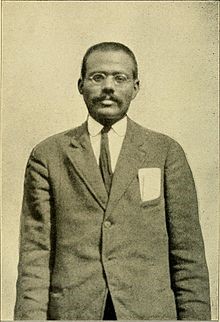
Young Lala Hardayal
Punjab: As early as 1904 a few young men of Saharanpur formed a secret society and took a solemn oath to lay down their lives in the struggle for the independence of the country. They soon joined Lala Hardayal, Ajit Singh, and Sufi Ambarprasad. The Swadeshi movement gave a great impetus to them and they kept a close contact with the Bengal Revolutionaries. After the deportation of Lala Lajpat Rai and Ajit Singh, there was a lull in the revolutionary activities but it flared up again in 1909 after the return of Lala Hardayal from abroad in 1908. After Hardayal again left India, the work was carried on by Rash Behari Bose and a number of his devoted pupils. It was this group that arranged and threw a bomb at Lord Hardings in Delhi, at the durbar of the first visit of King-Emperor George V at Delhi on 12 December 1911. This was a historical revolutionary event.
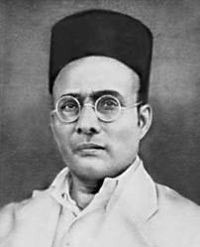
Veer Savarkar
Maharashtra: Although Savarkar himself proceeded to London in 1906, his organization (Abhinav Bharat) continued to flourish in India. It seriously took the revolutionary activities and tried to spread its branches all over Maharashtra. The life of Mazzini was translated by Savarkar in Marathi, of which 2000 copies were sold in three months. Many colleges and higher educational institutions in Poona and Bombay had at least one secret society or branch of the Abhinav Bharat, also in Mysore and Madhya Pradesh. These societies also established contact with Bengal Revolutionaries.
Arms were surreptitiously sent from London by Savarkar. He sent a number of browning pistols to India with Mirza Abbas, Sikandar Hayat, and several others. Mr. Parker of the Scotland Yard stated that in the course of his deposition in the Nasik Conspiracy Case, hundreds of such pistols were purchased by Indians in England. A member of the society P. N. Bapat was sent to Paris to learn the art of Bomb making from Russian Revolutionaries. He worked with Hem Chandra Das and Mirza Abbas who were also there for the same purpose.
Other Regions: A revolutionary organization grew up in Rajasthan in imitation of Bengal. Sachindranath Sanyal, sent two members of his organization from Varanasi to Kharwa to prepare bombs. By the year 1911, the local organization was joined by a number of young men, some of whom were sent to Delhi to be trained by notable revolutionary leaders like Amir Chand, Awadh Bihari, and Bal Mukund. Three revolutionary students of this society killed the Jodhpur Mahant (abbot) of a temple in 1913. Varanasi was also a great center of revolutionary activities and was the headquarters of Rash Behari Bose and Sachindra Nath Sanyal.
Revolutionary activities were also noticeable in Madras. According to Government version, this was due to the excitement caused by the fiery speeches of Bipin Chandra Pal in 1907, preaching the ideal of complete freedom from British control. A serious riot broke out of Tinnevelly in 1908 in the course of which public buildings were burnt and furniture and records were set on fire. One member shot dead Mr. Ashe, the District Magistrate of Tinnevelly, for his part in suppressing the riot.
In the next part, we will see Samiti's link with Foreign Movements, failures, the British clamp down, failed unification and later resurgence.
To be Continued
References:
1. History of Freedom Movement in India, Vol - II, By R. C. Mazumdar
2. Report of Sedition Committee by Mr. Justice Rowlatt, 1918.
3. The History and Culture of the Indian People, Vol - XI - Struggle for Freedom, R. C. Mazumdar, Chapter VIII.
4. Indian Revolutionaries - By Sri Krishna Saral







Comments